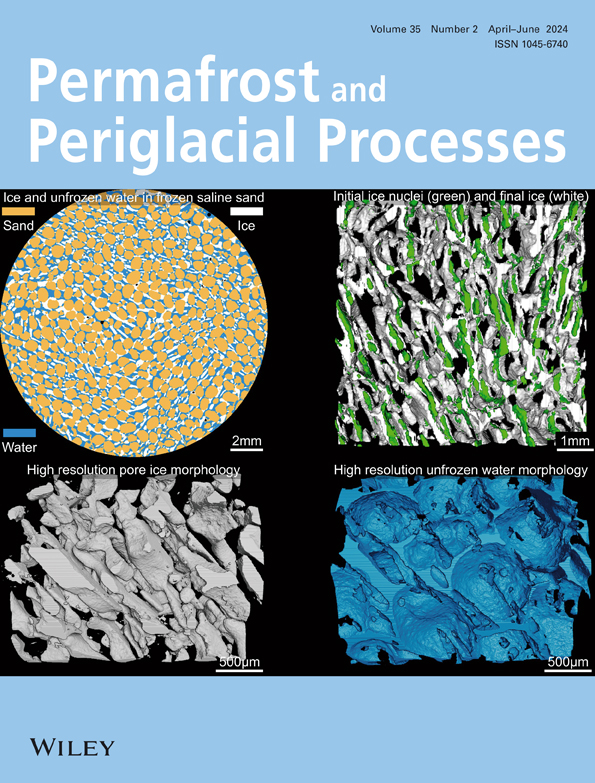匈牙利Transdanubia西部MIS‐2热收缩裂纹多边形的表征和映射
IF 3.3
3区 地球科学
Q2 GEOGRAPHY, PHYSICAL
引用次数: 2
摘要
潘诺尼亚盆地位于最后一次冰川盛期(LGM)的永久冻土最南端,存在争议。在盆地的西部,面积超过1200 平方公里,调查了150多个多边形图案地面的地点,并收集了72个被鉴定为残留沙楔的沉积物样本。从填充物中获得了10个光学受激发光年龄,同时还对卫星图像进行了形态计量分析。我们的研究表明,多边形网络分几个阶段发展,从15.01开始 ± 1.68至23.0±1.7ka。多边形的平均直径为13-23 m,主要存在于平坦表面,侵入古拉巴的砾石冲积宿主。统计分析强调了砂质填充物的运输期短和沉积物来源多。这项研究增加了进一步的数据,以评估永久冻土或深层季节性霜冻的存在,并解释中欧冰缘地区的LGM。本文章由计算机程序翻译,如有差异,请以英文原文为准。
Characterization and mapping of MIS‐2 thermal contraction crack polygons in Western Transdanubia, Hungary
The Pannonian Basin was located in the southernmost, disputed limit of permafrost during the Last Glacial Maximum (LGM). In the western part of the basin, over an area of 1,200 km2, more than 150 sites with polygonal patterned ground were surveyed, and 72 sediment samples from forms identified as relict sand wedges were collected. Ten optically stimulated luminescence ages were obtained from the infills, while morphometric analyses were also carried out on satellite images. Our study revealed that the polygonal networks developed in several phases, from 15.01 ± 1.68 to 23.0 ± 1.7 ka. The polygons have an average diameter of 13–23 m and are mainly present on flat surfaces, intruding into the gravelly, alluvial host of the paleo‐Rába. Statistical analyses highlighted the short transportation period of the sandy infill and multiple sediment provenances. This study adds further data to assess the presence of permafrost or deep seasonal frost and to the interpretation of the LGM in the central European periglacial domain.
求助全文
通过发布文献求助,成功后即可免费获取论文全文。
去求助
来源期刊
CiteScore
9.70
自引率
8.00%
发文量
43
审稿时长
>12 weeks
期刊介绍:
Permafrost and Periglacial Processes is an international journal dedicated to the rapid publication of scientific and technical papers concerned with earth surface cryogenic processes, landforms and sediments present in a variety of (Sub) Arctic, Antarctic and High Mountain environments. It provides an efficient vehicle of communication amongst those with an interest in the cold, non-glacial geosciences. The focus is on (1) original research based on geomorphological, hydrological, sedimentological, geotechnical and engineering aspects of these areas and (2) original research carried out upon relict features where the objective has been to reconstruct the nature of the processes and/or palaeoenvironments which gave rise to these features, as opposed to purely stratigraphical considerations. The journal also publishes short communications, reviews, discussions and book reviews. The high scientific standard, interdisciplinary character and worldwide representation of PPP are maintained by regional editorial support and a rigorous refereeing system.

 求助内容:
求助内容: 应助结果提醒方式:
应助结果提醒方式:


